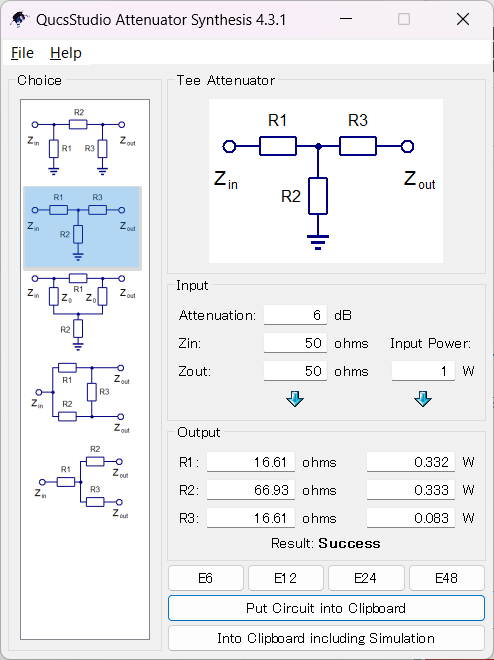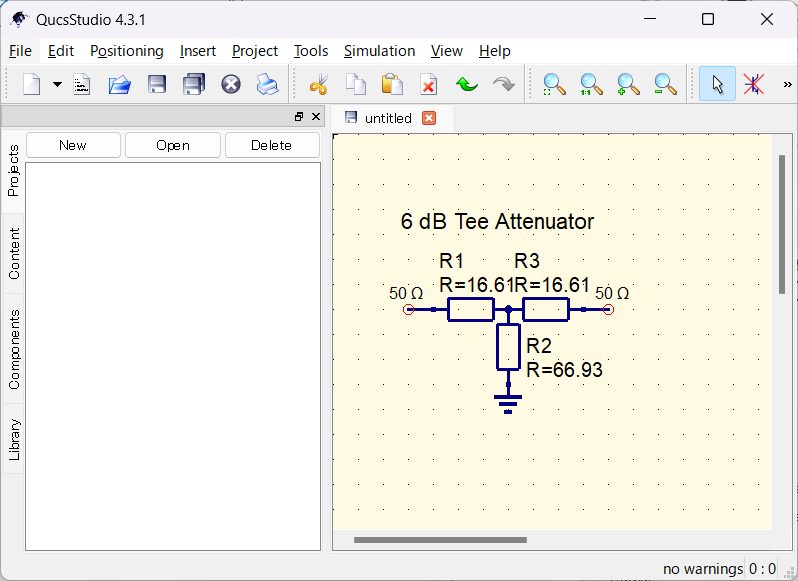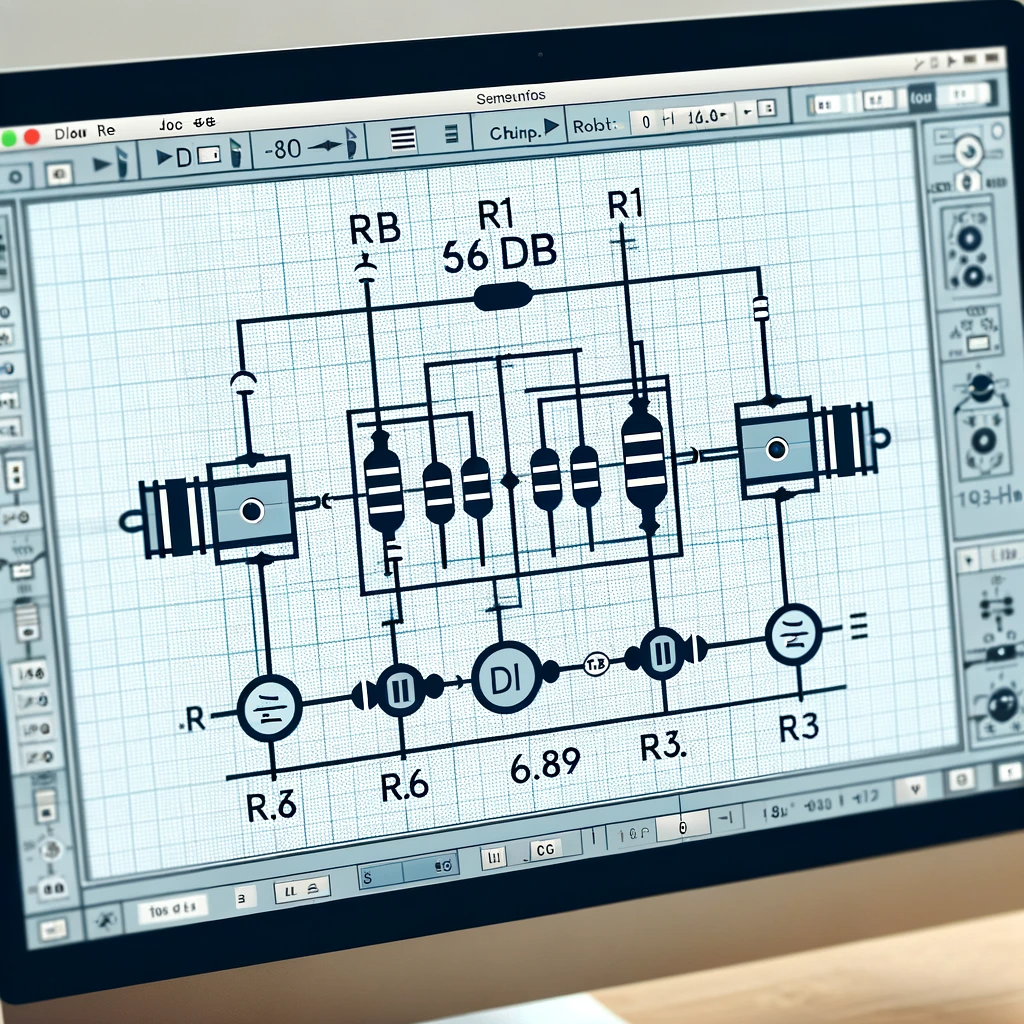How to Use Qucsattenuator.exe and Create an Attenuator
Qucsattenuator.exe is an attenuator synthesis tool in Qucs, offering a convenient way to design attenuators easily. This article introduces how to launch Qucsattenuator, provides usage examples, and explains how to paste simulation results into Qucs.
Starting and Using Qucsattenuator
- Launching Qucsattenuator: Double-click
qucsattenuator.exein the Qucs installation directory to start it. - Selecting the Type of Attenuator: Choose the type of attenuator from “Choice” and enter the required attenuation in “Attenuation”.
- Calculating Resistance Values: The calculation is performed, and the required resistance values are displayed.
Pasting Simulation Results into Qucs
- Copying Simulation Results: When you create an attenuator in Qucsattenuator, the results are copied to the system clipboard.
- Pasting in Qucs: Open Qucs, create a new circuit diagram, and press CTRL-V (paste from clipboard) to insert the attenuator circuit diagram and run the simulation.
Specific Example of Creating an Attenuator
- Problem: Determine the resistor values R1, R2, and R3 for a 6dB attenuation in a T-type attenuator in a 50Ω transmission line.
- Solution: Launch Qucs Studio, select “Attenuator synthesis” from “Tools”. Choose T-type, enter 6dB in “Attenuation”, and the calculation results will be displayed. For example, R1 = 16.6Ω, R2 = 66.9Ω, R3 = 16.6Ω.

The resistance values calculated are theoretical. If you want to assemble a circuit using E6 or E12 series parts, press the button at the bottom of the screen for a circuit using that series.
The calculation results can be copied to the clipboard by pressing ‘Put Circuit into Clipboard’ or ‘Into Clipboard including Simulation’, and then pasted directly into the QUCS Studio circuit diagram.

In this way, you can easily design an attenuator using Qucsattenuator and import the results into Qucs.



コメント